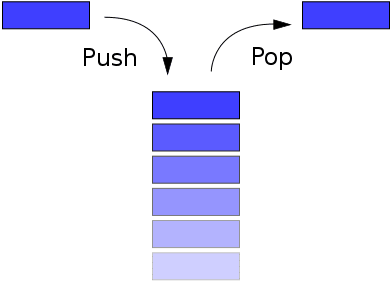Introduction
Two of the most basic data structures are the Queue and the Stack. These can be implemented in many different ways and their underlying data structures could also be of various types. Usually they are based on either linked lists or arrays.
In our case I have chosen to base these data structures on slices, as this is a native type in Go and is very easy to manipulate (grow, slice, etc.), also very efficient.
Slices are based on arrays but are more flexible, have a dynamic length and use pointers to retrieve data.
The Queue
Below is the entire code for the basic queue implementation. You can see that we have created a Queue struct which contains a data field of type slice. This field is going to hold all the queue values.
We've also added some methods: IsEmpty, Peek, Queue and Dequeue.
/*
Package queue provides a slice-based Queue data structure
*/
package queue
import "fmt"
// Queue : data structure
type Queue struct {
data []int
}
// New : returns a new instance of a Queue
func New() *Queue {
return &Queue{
data: []int{},
}
}
// IsEmpty : checks whether the queue is empty
func (q *Queue) IsEmpty() bool {
return len(q.data) == 0
}
// Peek : returns the next element in the queue
func (q *Queue) Peek() (int, error) {
if len(q.data) == 0 {
return 0, fmt.Errorf("Queue is empty")
}
return q.data[0], nil
}
// Queue : adds an element onto the queue and returns an pointer to the current queue
func (q *Queue) Add(n int) *Queue {
q.data = append(q.data, n)
return q
}
// Dequeue : removes the next element from the queue and returns its value
func (q *Queue) Remove() (int, error) {
if len(q.data) == 0 {
return 0, fmt.Errorf("Queue is empty")
}
element := q.data[0]
q.data = q.data[1:]
return element, nil
}
The Stack
The stack has an identical underlying structure as the queue - a slice. Although the methods are slightly different: IsEmpty, Peek, Push, Pop.
Notice how we are using LIFO (last in , first out) principle here.
/*
Package stack provides a slice-based Stack data structure
*/
package stack
import "fmt"
// Stack : data structure
type Stack struct {
data []int
}
// New : returns a new instance of a stack
func New() *Stack {
return &Stack{
data: []int{},
}
}
// IsEmpty : will return a boolean indicating whether there are any elements on the stack
func (s *Stack) IsEmpty() bool {
return len(s.data) == 0
}
// Peek : will return the element on the top of the stack
func (s *Stack) Peek() (int, error) {
if s.IsEmpty() {
return 0, fmt.Errorf("Stack is empty")
}
return s.data[len(s.data)-1], nil
}
// Push : Adds an element on the stack
func (s *Stack) Push(n int) *Stack {
s.data = append(s.data, n)
return s
}
// Pop : removes an element from the stack and returns its value
func (s *Stack) Pop() (int, error) {
if len(s.data) == 0 {
return 0, fmt.Errorf("Stack is empty")
}
element := s.data[len(s.data)-1]
s.data = s.data[:len(s.data)-1]
return element, nil
}
Conclusion
As you have probably noticed, the Stack and the Queue are quite similar and the main difference is the order in which we retrieve the data: FIFO (queue) and LIFO (stack).
Source code with tests
 dorin131
/
go-data-structures
dorin131
/
go-data-structures
A collection of data structures implemented in Go
Also read
Video






Top comments (4)
There should be mentioned about the bidirectional queue.
en.wikipedia.org/wiki/Double-ended...
Sure! It is a bit different though.
Are you personally using a bidirectional queue for something? If so, I'm curious to know what for.
If I see the benefit of using double-queue, of course, I'll apply it. As for practical using, I can't give you a good example:). Also, good to see the implementation of the following type of queue:
Thanks for the suggestion. I'll try to implement those :)